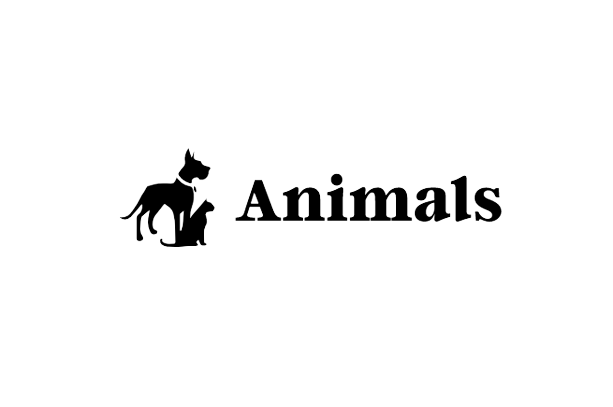1. Introduction
2. The History of the Black-footed Ferret
3. Physical Characteristics of Black-footed Ferrets
4. Habitat and Distribution
5. Diet and Feeding Habits
6. Reproduction and Life Cycle
7. Conservation Efforts for Black-footed Ferrets
8. Threats and Challenges Facing Black-footed Ferrets
9. The Importance of Black-footed Ferrets in Ecosystems
10. Economic and Ecological Benefits of Black-footed Ferret Conservation
11. Research and Monitoring of Black-footed Ferrets
12. The Role of Zoos in Black-footed Ferret Recovery
13. Public Awareness and Education Programs
14. Success Stories and Future Perspectives
15. Conclusion
Introduction:
Welcome to the fascinating world of the black-footed ferret, a captivating species native to North America. In this article, we will explore the history, physical characteristics, habitat, diet, reproduction, conservation efforts, and the significance of black-footed ferrets in ecosystems. Join us on this educational journey to discover the wonders of this enigmatic creature.
The History of the Black-footed Ferret:
The black-footed ferret has a remarkable history intertwined with the vast prairies of North America. Discovered in 1851 by naturalist John James Audubon, the species thrived in the grasslands, relying on prairie dogs as its primary source of food. However, due to habitat loss, disease, and widespread extermination efforts, the black-footed ferret was declared extinct in the wild in 1979.
Physical Characteristics of Black-footed Ferrets:
Black-footed ferrets possess distinct physical traits that set them apart. With a slender, elongated body measuring around 18-24 inches in length, they showcase a unique coloration pattern of yellowish fur, black markings, and a black mask around their eyes. These striking features make them easily recognizable and give them a charming, yet mischievous appearance.
Habitat and Distribution:
The natural habitat of black-footed ferrets predominantly consists of prairie ecosystems, where prairie dog colonies provide essential shelter and food. Historically, they roamed across the Great Plains of North America, from Canada to Mexico. However, due to their endangered status, they are now limited to a few select reintroduction sites in the United States.
Diet and Feeding Habits:
Black-footed ferrets are specialized predators, relying almost entirely on prairie dogs for sustenance. Their diet consists of prairie dog meat, and they possess exceptional hunting skills to catch their agile prey. By controlling prairie dog populations, black-footed ferrets play a crucial role in maintaining the ecological balance of their habitats.
Reproduction and Life Cycle:
Breeding for black-footed ferrets is a delicate process due to their low population numbers. Females only come into heat once a year, making successful reproduction challenging. After a gestation period of approximately 42 days, litters of kits are born. The kits are raised in burrows and learn essential hunting skills from their parents before venturing out into the prairie on their own.
Conservation Efforts for Black-footed Ferrets:
Recognizing the critical status of black-footed ferrets, extensive conservation efforts have been undertaken to restore their populations. Collaborative initiatives involving government agencies, nonprofit organizations, and zoos have led to successful captive breeding programs and reintroductions into suitable habitats. These efforts have provided a lifeline for the species, allowing it to make a remarkable comeback from the brink of extinction.
Threats and Challenges Facing Black-footed Ferrets:
Despite the significant progress made in black-footed ferret conservation, several challenges continue to threaten the survival of this iconic species. Habitat loss remains a pressing issue, as the conversion of prairie lands for agriculture and urban development diminishes suitable habitats for both black-footed ferrets and their primary prey, prairie dogs.
Another major threat to black-footed ferrets is disease. Sylvatic plague, a bacterial infection carried by fleas that infest prairie dogs, can devastate entire prairie dog colonies and subsequently impact the ferret population. Efforts to control and manage the spread of this disease are crucial for the long-term survival of black-footed ferrets.
Additionally, fragmented landscapes and barriers such as roads and fences pose challenges to the natural movement and dispersal of black-footed ferrets. Genetic diversity is vital for the health and adaptability of the species, and limited gene flow due to habitat fragmentation can lead to decreased genetic variability and increased vulnerability to diseases and other environmental changes.
The Importance of Black-footed Ferrets in Ecosystems:
Black-footed ferrets play a crucial role in maintaining the health and balance of prairie ecosystems. By preying on prairie dogs, they help regulate their populations, preventing overgrazing and the degradation of grasslands. Prairie dog colonies are ecosystem engineers, shaping the landscape and providing habitat for numerous other species such as burrowing owls, swift foxes, and grassland birds. The presence of black-footed ferrets supports the overall biodiversity of these habitats.
Moreover, black-footed ferrets have a profound ecological connection with prairie dogs. Their survival is intrinsically linked to the conservation of prairie dog populations. By protecting and restoring their habitats, we ensure the survival of not just the black-footed ferret, but an entire complex web of species that depend on the prairie ecosystem for their existence.
Economic and Ecological Benefits of Black-footed Ferret Conservation:
The conservation of black-footed ferrets offers numerous economic and ecological benefits. From an economic standpoint, black-footed ferrets draw tourists and visitors to regions where they have been reintroduced. Wildlife enthusiasts and nature lovers travel to these areas to witness the rare and captivating sight of black-footed ferrets in their natural habitat. This influx of tourism can provide economic opportunities for local communities and support conservation initiatives in the long run.
Furthermore, the preservation of black-footed ferrets and their prairie habitats contributes to ecosystem services. Healthy prairie ecosystems provide clean air, water filtration, and carbon sequestration, benefiting not only wildlife but also human communities. By conserving these ecosystems, we safeguard the natural processes that sustain life on Earth.
Research and Monitoring of Black-footed Ferrets:
Ongoing research and monitoring efforts are essential for understanding the behavior, ecology, and population dynamics of black-footed ferrets. Scientists and conservationists employ various techniques, including radio telemetry, genetic studies, and camera traps, to gather data and gain insights into the species' needs and challenges. This knowledge informs conservation strategies, helps identify suitable reintroduction sites, and guides habitat management practices.
The Role of Zoos in Black-footed Ferret Recovery:
Zoos play a vital role in black-footed ferret recovery through captive breeding programs and reintroductions. Accredited zoos collaborate closely with government agencies and conservation organizations to breed black-footed ferrets in controlled environments. These captive populations act as an insurance policy, safeguarding genetic diversity and serving as a source for reintroduction into the wild.
Moreover, zoos engage in public education and awareness programs, raising awareness about black-footed ferrets and the importance of their conservation. Through interactive exhibits, educational materials, and outreach initiatives, zoos help to inspire and educate visitors about the importance of conserving endangered species and their habitats. Zoos also work to support conservation efforts in the field, providing financial and technical assistance for habitat restoration, research, and monitoring. By partnering with other organizations and institutions, zoos can leverage their expertise and resources to make a meaningful contribution to black-footed ferret recovery and the broader goal of biodiversity conservation.
Public Awareness and Education Programs:
Public awareness and education programs play a vital role in the conservation of black-footed ferrets. It is essential to engage and inform the public about the importance of protecting this endangered species and its habitat. Through various initiatives, such as educational campaigns, community events, and outreach programs, the public is educated about the ecological significance of black-footed ferrets and the need for their conservation.
These programs aim to foster a sense of responsibility and stewardship among individuals, encouraging them to take action in supporting black-footed ferret recovery efforts. By providing accurate information and dispelling misconceptions, these initiatives empower communities to contribute to the conservation cause, whether through volunteering, supporting organizations, or advocating for policies that protect the species and its habitat.
Success Stories and Future Perspectives:
The conservation efforts for black-footed ferrets have yielded remarkable success stories. Thanks to the collaborative efforts of government agencies, conservation organizations, zoos, and dedicated individuals, the black-footed ferret has made a remarkable comeback from the brink of extinction. Reintroduction programs have successfully established viable populations in select sites, providing hope for the species' future.
However, the work is far from over. Continued monitoring, research, and habitat restoration are crucial to ensure the long-term survival and recovery of black-footed ferrets. Building upon the success achieved so far, future perspectives include expanding reintroduction efforts, establishing new populations in suitable habitats, and addressing ongoing threats such as habitat loss and disease.
Conclusion:
The black-footed ferret represents a compelling tale of survival, resilience, and the power of conservation. As a species on the brink of extinction, it serves as a symbol of the importance of preserving our natural heritage. Through collaborative efforts, scientific research, public awareness, and habitat restoration, we have the opportunity to secure the future of the black-footed ferret and the prairie ecosystems it calls home.
By valuing the intrinsic worth of this unique creature and recognizing its vital role in ecosystems, we take a step towards a more sustainable and balanced world. Let us continue to champion the cause of black-footed ferret conservation, ensuring that future generations can experience the awe-inspiring beauty of this iconic American mustelid.
FAQs (Frequently Asked Questions):
Q1: Are black-footed ferrets dangerous to humans?
- No, black-footed ferrets are not dangerous to humans. They are small carnivores and pose no threat to human safety.
Q2: Can black-footed ferrets be kept as pets?
- No, black-footed ferrets are wild animals and are protected by law. It is against the law to keep them as pets.
Q3: How many black-footed ferrets are left in the wild?
- Thanks to conservation efforts, the black-footed ferret population in the wild has increased, but exact numbers are difficult to determine. Estimates suggest several hundred individuals.
Q4: What can I do to support black-footed ferret conservation?
- You can support black-footed ferret conservation by spreading awareness, donating to reputable organizations, volunteering, and advocating for policies that protect their habitat.
Q5: Are black-footed ferrets related to domestic ferrets?
- Yes, black-footed ferrets are part of the Mustelidae family, which includes domestic ferrets. However, they are distinct species and have different ecological roles and conservation needs.





0 Comments